The Casa del Mantegna in Mantua hosts, from September 20 to October 26, 2025, the solo exhibition of Alfonso Leto (Santo Stefano Quisquina, 1956) entitled SCREEN - continuous painting, curated by Ilaria Bignotti and Enzo Fiammetta. The exhibition is part of the activities for the promotion and dissemination of contemporary languages, with special attention to the dialogue with international realities of art. The Fondazione Orestiadi di Gibellina, which has consolidated an active relationship with the artist over the years, is supporting the exhibition together with “Gruppo Tea” and “Studio Andrea Minari,” with the contribution of the Province of Mantua and the Municipality of Santo Stefano Quisquina, the artist’s hometown.
Alfonso Leto, born in Santo Stefano Quisquina (Agrigento) in 1956, trained in the artistic and experimental environment of Palermo between the 1970s and 1980s. His career is distinguished by an extensive exhibition career, with solo and group shows in various Italian and international venues, including Palazzo delle Esposizioni and Galleria Nazionale d’Arte Moderna in Rome, European Parliament in Brussels, Italian Cultural Institute in Madrid, Ludwig Foundation and Air Space Museum in New York. The exhibition in Mantua presents a body of sixty works, almost all previously unpublished, selected by the artist with the collaboration of the curators. The body of works testifies to the expressive richness of Leto, who has maintained painting as his main medium of investigation.
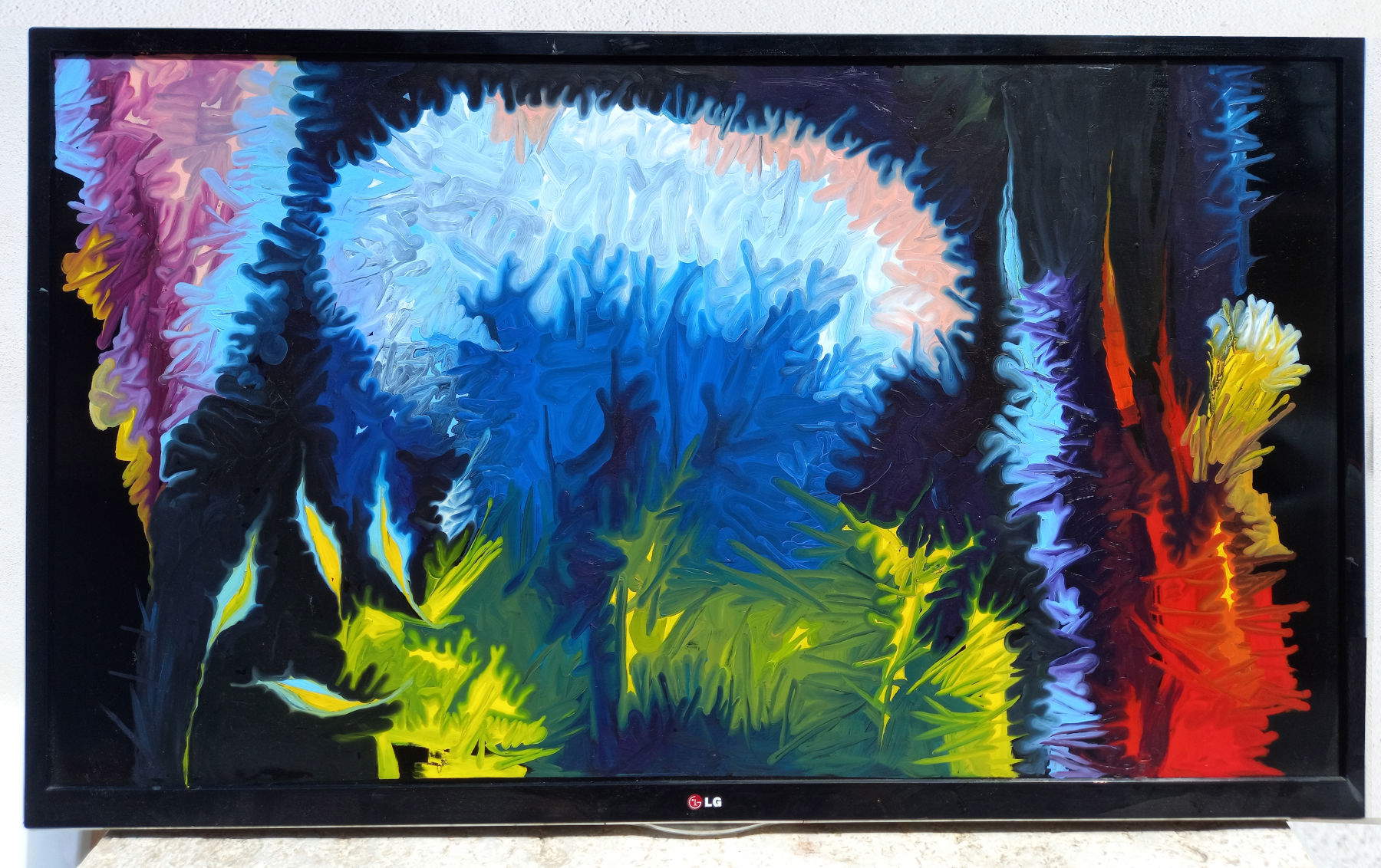
“Imagining today,” says Alfonso Leto, “six centuries later a possible physiognomy of one of the most iconic couples of the Renaissance is a desire inherent to the pictorial (mythological-affective) gesture: an almost mediumistic exercise, from which two Renaissance faces and cyborgs painted on media extracted from TV screens, like most of the works in this exhibition, arise.”
“The individual dimension,” writes Ilaria Bignotti in the catalog essay, “egoic, the fascination with the complexity of painting on a screen, the tension to painting as a riotous technique that the artist makes even more untamable by grappling with unusual surfaces: the screen for Leto is a projection of his own battle, it is the field of a hand-to-hand combat that enlivens the imaginative process. With the devices off, the mechanism of imagination is turned on.”
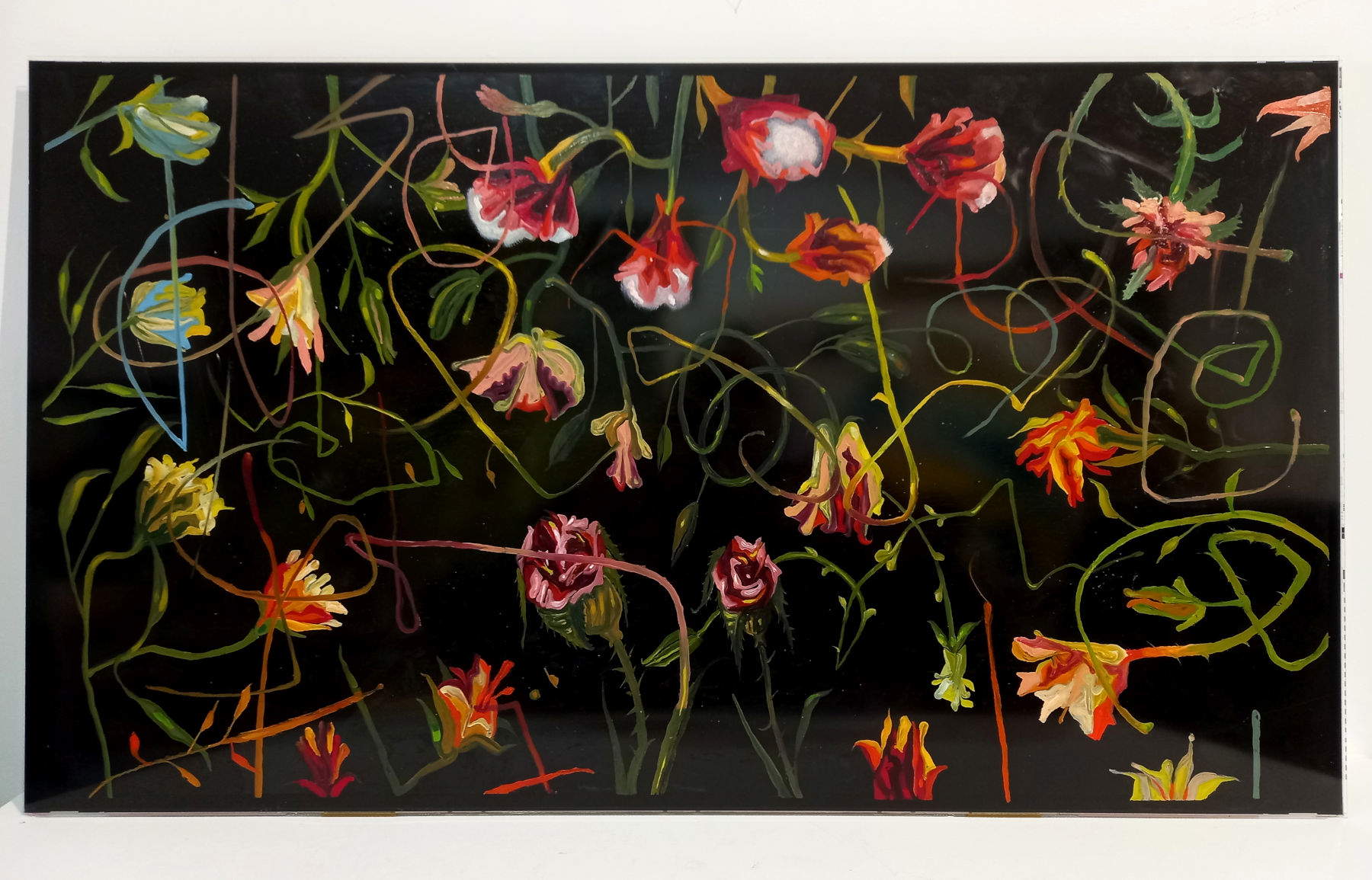
“These pictorial ”screenshots“ become meditations on the creative act,” writes Enzo Fiammetta, Director of the Orestiadi Foundation’s Museum of Mediterranean Textures in the catalog essay. “The use of the screen as a support to restore meaning to painting. This practice is reminiscent of the covering, in the Baroque period, of wall scores in medieval churches to which stuccoes and decorations are superimposed, in order to give new meaning to the support: the screens, which today assume a redundant centrality in our relationship with the world, in our attempt to make sense of the succession of reels to which we have delegated the compressed understanding of reality. The painterly gesture, as old as man, is superimposed on the pixels of the monitor to attempt the recomposition of the aesthetic-visual experience.”
The core of the exhibition is the most recent production, made on surfaces from discarded electronic devices such as monitors, tablets and televisions. The pictorial intervention transforms these objects, offering them a new life and suggesting a reflection on recycling and global exploitation that characterizes them before their arrival to end users. Leto, without rhetoric, gives these fragments an aesthetic and symbolic dignity, defining their recovery as “an ideal paradise of spare parts.” The choice of recycled media dialogues with the environmental commitment of the project’s supporters, consolidating the link between art and sustainability.
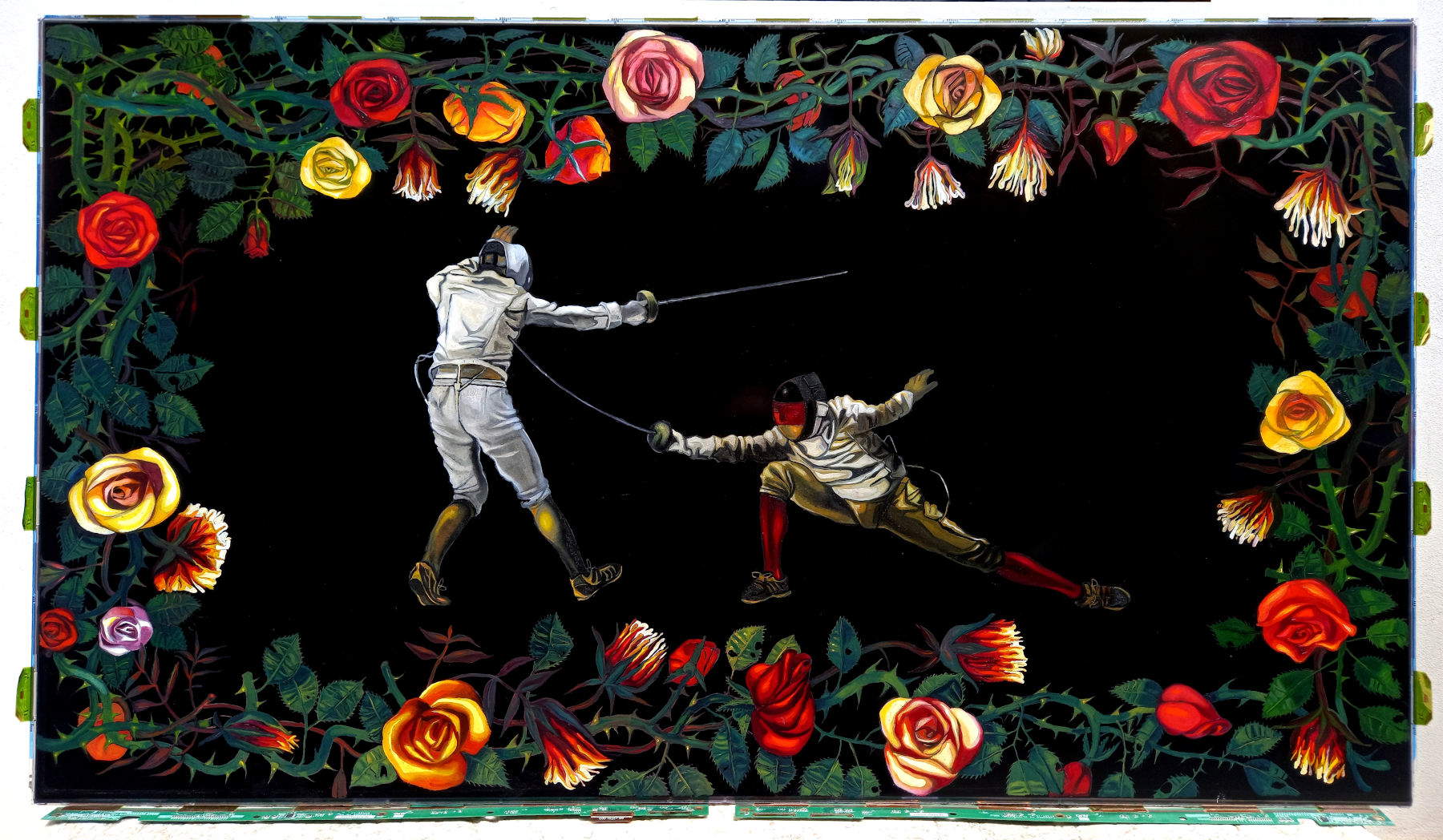
Alongside works made on screens, the exhibition includes works on more traditional media such as canvases, boards, slate and metals. The juxtaposition of different materials constitutes a coherent narrative thread that runs through Leto’s heterogeneous production. The coexistence of visual codes makes it possible to grasp the conceptual continuity between works that differ in technique and support, highlighting the artist’s originality and versatility. On the occasion of the exhibition at the Casa del Mantegna, Leto created two imaginary portraits of Andrea Mantegna and his first wife Nicolosia Bellini, thus deepening the link between contemporary production and Renaissance tradition.
The exhibition at the Casa del Mantegna bears witness to the evolution of Leto’s artistic research, characterized by a balance between concept and style, often integrating painting, object, and extrartistic media. His work is distinguished by a constant tension between irony and critical reflection, as evidenced by the marsupial canvases, the “poets’ tax codes” and the vacuum paintings with gadgets, but also the painting on computer monitors or the apocryphal visions of religion. Lacapacity to combine experimentation and narrative coherence represents a distinctive feature of his production, which continues to evolve without giving up its artistic identity.
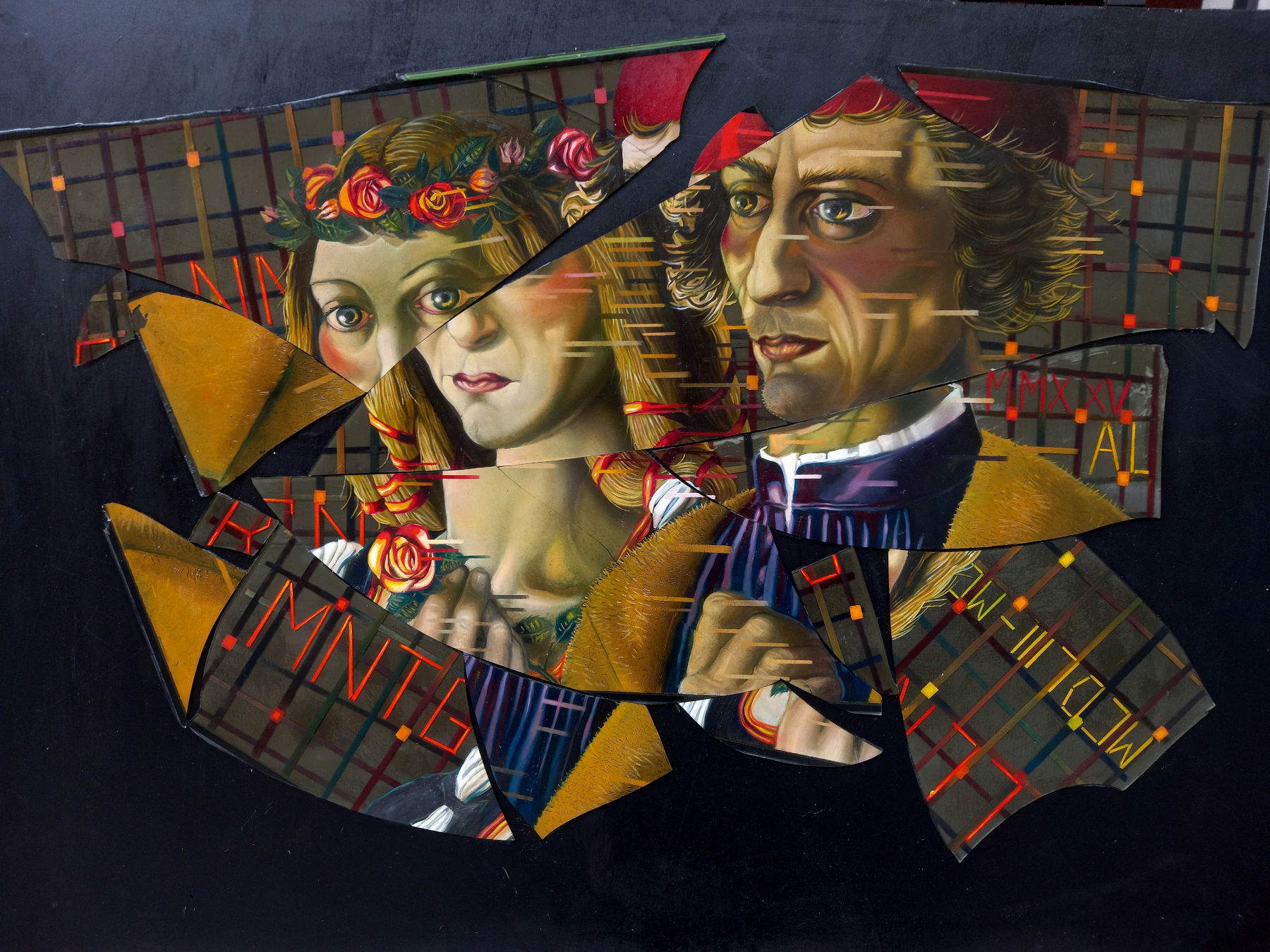
Leto has been featured several times in the cultural programs of the Orestiadi Foundation of Gibellina, where he also created the permanent installation Meteorites. His work has been the subject of critical insights by many prominent scholars and critics, including Fulvio Abbate, Achille Bonito Oliva, Renato Barilli, Claudia Colasanti, Valentina Di Miceli, Patrizia Ferri, Giuseppe Frazzetto, Marina Giordano, Helga Marsala, Marco Meneguzzo, Francesca Alfano Miglietti, Paola Nicita, Edward Lucie Smith, Maria Grazia Torri, Sergio Troisi, Barbara Tosi, and Emilia Valenza.
“Painting is screen: it is screen, it scans, it goes beyond the surface of things,” the artist recently recalled. “In Screen-Pittura continua Alfonso Leto exhibits in Mantova’s Casa del Mantegna, a dwelling that the Renaissance artist built with geometric, crystalline rigor and tension to the transcendental: ab olympo, a conspicuous selection of recent works and many newly minted, unpublished ones. A long-awaited review, after the great exhibition of 2018, produced by the Orestiadi Foundation on the occasion of the edition of Manifesta held in Palermo, in the year in which the city was the Italian Capital of Culture (...) The screen, of a tablet, of a smartphone, of a television set, of a solar panel, is always a surface from which come out images programmed elsewhere, triggered by an algorithm, reiterated and renewed in a process of creation of need and stimulation of desire. (...) Leto’s operation makes us ’forget from memory’ that it is a screen: it is the place where painting gives itself, happens, comes out and makes us out. It is a matter of phenomenology of the image, at degree zero. An instruction manual without notes. Leto’s history with the screen is a long one, beginning in 1999, the year of the Millennium bug, when invited by Achille Bonito Oliva to participate in the Electronic Art Café project at the National Gallery of Modern Art in Rome, he proposed pictorial interventions on computer screens both on and off. ”Since that experience I have continued periodically to adopt and progressively include monitors and various electronic scraps in the pictorial gesture."
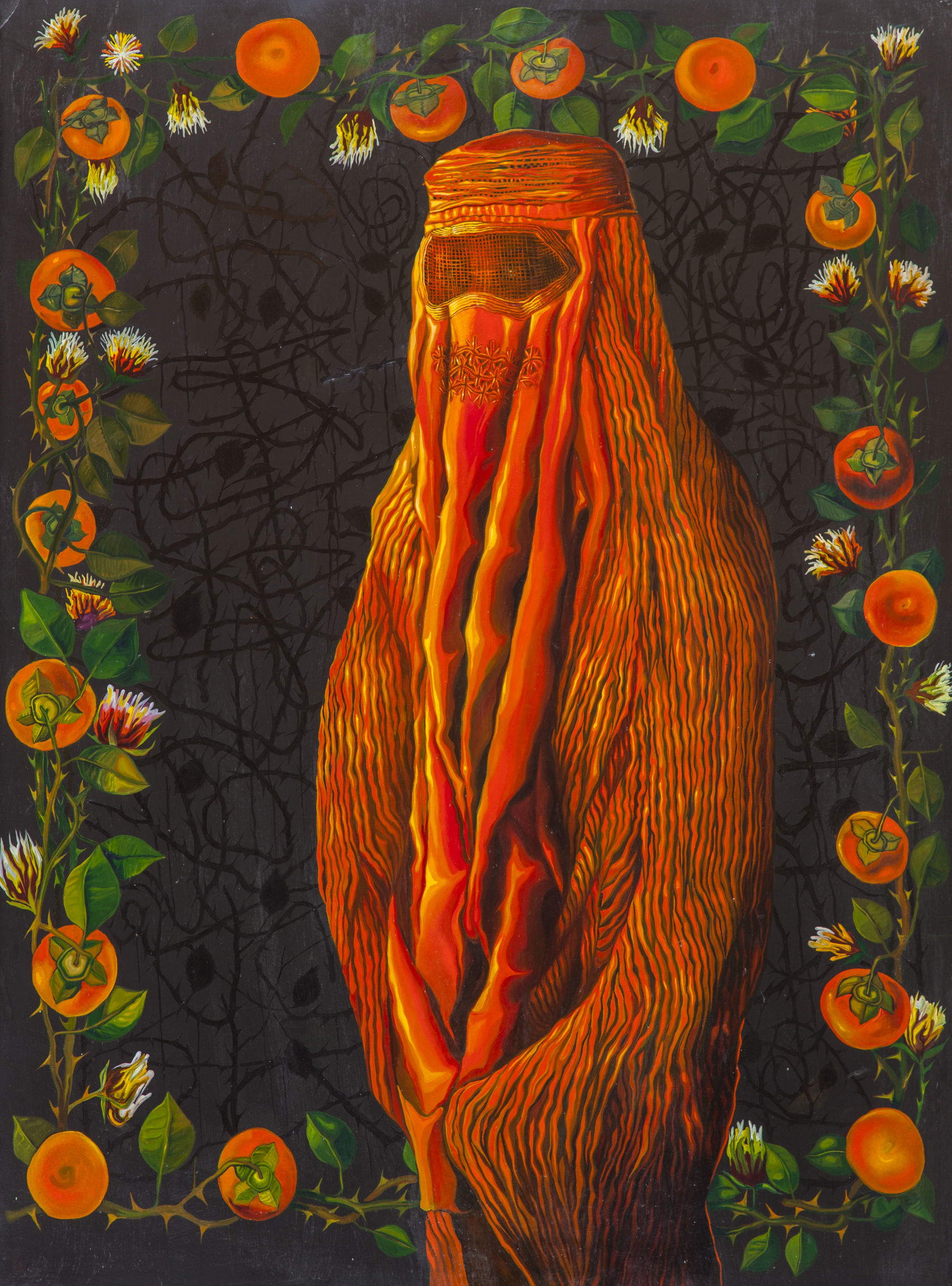
In recent decades, Leto has participated in major exhibitions such as The Paths of the Sublime (1998) in Palermo, Annual Development/New European Artists (2001) curated by Edward Lucie Smith, and retrospectives curated by Achille Bonito Oliva and Marco Meneguzzo. The Manifesta program of the Metropolitan City of Palermo dedicated a retrospective exhibition to him in 2018 at Palazzo Sant’Elia, collecting works made between 1977 and 2018. The Fabbriche Chiaramontane in Agrigento, in 2009, had already hosted a selection of works from the last decade, emphasizing the continuity of a creative path always animated by a tension capable of changing skin and renewing itself.
The exhibition SCREEN - continuous painting thus proposes an interpretation of Leto’s production that addresses issues of sustainability, recovery and transformation of materials, without renouncing conceptual complexity and stylistic coherence. The combination of traditional painting and recycled surfaces, together with continuous experimentation, allows the visitor to confront a body of works that spans decades of research and reflects the tensions and transformations of the contemporary.
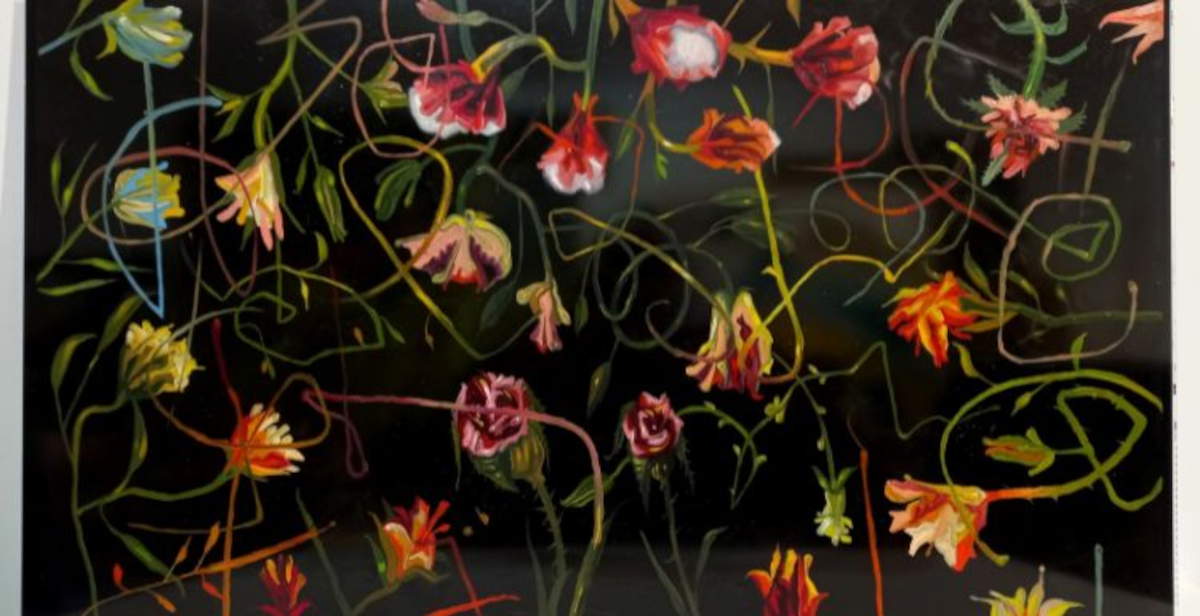 |
| SCREEN - painting continues: Alfonso Leto at the Casa del Mantegna in Mantua |
Warning: the translation into English of the original Italian article was created using automatic tools. We undertake to review all articles, but we do not guarantee the total absence of inaccuracies in the translation due to the program. You can find the original by clicking on the ITA button. If you find any mistake,please contact us.